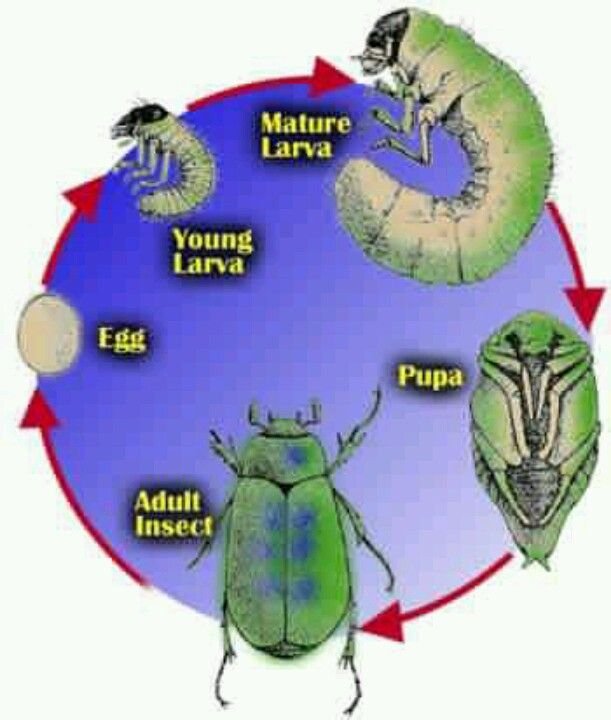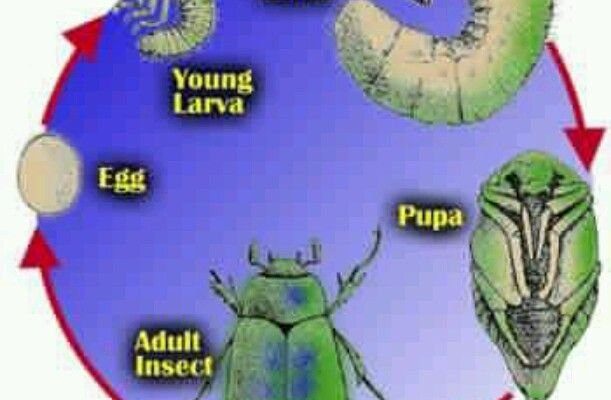
Grub worms, primarily the larvae of beetles, belong to a group of insects known as Coleoptera. These little fellows might not steal the spotlight, but they are essential for soil health and plant life. Whether you’re a gardener hoping to understand their impact or just curious about how these creatures develop, you’re in for a treat. Get comfy, and let’s break down their lifecycle step by step.
The Egg Stage: Tiny Beginnings
The grub worm’s journey kicks off with the **egg stage**. Female beetles lay hundreds of eggs in soil, usually in late spring or early summer. Picture this: a mother beetle carefully placing her eggs in a safe spot, much like a hen settling into her nest. The eggs are tiny, often barely visible to the naked eye, and can range in color from white to yellowish.
After a week or two, these eggs hatch and tiny larvae emerge. It’s like watching a surprise party reveal! At this point, the larvae are so small that they often go unnoticed. They begin to feed on organic matter in the soil—like decaying roots and leaves—establishing their future as soil rejuvenators. Here’s the thing: if you’re looking to manage a garden, being aware of when eggs hatch can help you predict when to expect new grub worms in your soil.
The Larval Stage: Growing Up
Once hatched, the larvae enter the **larval stage**, which is the phase most people associate with grub worms. These little guys grow rapidly, feeding on organic material and sometimes even plant roots. Think of this stage as their teenager years, where they’re hungry and trying to bulk up.
During this phase, they can be quite destructive, munching through your grass and garden plants. If you notice your lawn looking patchy, it might be a sign of an infestation. They are usually white or cream-colored with a soft, C-shaped body and a brown head. If you’re a gardener worried about grubs, here’s a tip: monitor your plants closely and consider beneficial nematodes as a natural control method. These tiny worms can help keep the grub population in check without harming other plants.
Grub worms will molt several times during their larval stage, growing bigger with each shedding. This stage can last from a few weeks to several months, depending on species and environmental conditions. The beauty of nature is that once they’ve stored enough energy and nutrients, they’re ready for the next big transformation.
The Pupal Stage: Preparing for Change
After the larval stage, grub worms enter the **pupal stage**. This is where the magic happens, similar to a caterpillar turning into a butterfly. The larva burrows deeper into the soil and forms a protective casing around itself called a pupal chamber. Inside this chamber, the larva undergoes a complete transformation, or metamorphosis.
During this time, grub worms are quite vulnerable. They rely on the surrounding soil for moisture and protection. It’s fascinating to think about what’s going on inside! The larva is actually reconfiguring itself into a beetle. This stage can last anywhere from a few weeks to several months, depending on the temperature and species. Warmer conditions can speed up the process, while cooler climates can slow it down.
As they develop, the specialized tissues that will become the adult beetle are forming. Picture a caterpillar slowly turning into a butterfly—this is the most dramatic phase of their lifecycle. The changes happening inside the pupa are quite remarkable, almost like a secret evolution happening right beneath our feet!
The Adult Beetle: The Final Form
And finally, we arrive at the **adult beetle stage**! After completing their transformation, the beetle emerges from the pupal chamber. At first, its exoskeleton is soft and pale. It’s like a newborn, trying to find its way into the world. Over time, the beetle’s exoskeleton hardens and darkens, making it tougher and ready to face life above ground.
Adult beetles will usually emerge in spring or early summer. They begin to mate shortly after, continuing the cycle. Beetles are often more visible than their grub counterparts, and they play an essential role in the ecosystem by feeding on pests, decomposing organic materials, and even pollinating plants. If you’re gardening, beetles can actually be quite beneficial, as long as they don’t get out of hand.
Here’s the fun part: beetles can live anywhere from a few months to several years, depending on their species. It’s quite the life journey from a tiny egg to a mature beetle! Not only do they contribute to the environment, but they also serve as an important food source for birds and other wildlife.
Grubs and the Environment
You might be wondering why understanding the grub worm lifecycle matters. Grub worms, like those from the Japanese beetle or June beetle, are often seen as pests, especially in gardens and lawns. However, they’re also integral to the health of the soil. By breaking down organic matter, they contribute to nutrient cycling, which helps plants thrive.
If you’re a gardener, knowing when to expect grubs can be helpful for managing your garden more effectively. For example, if you recognize the signs of grub activity in the summer, you can take preventive measures before they do significant damage. This could be opting for organic pest control or enhancing your soil health to discourage their population naturally.
It’s all about balance in our ecosystems. Grubs may seem bothersome at times, but they play a role in sustaining the environments where they thrive. When managed wisely, they can coexist with thriving gardens.
Managing Grub Infestations
If you’ve decided that grubs are taking over your lawn, don’t worry—there are various ways to manage them! Understanding their lifecycle can guide your actions, making control methods more effective.
Here are some strategies to consider:
- Monitoring: Keep an eye on your lawn and garden. Look for signs of grub activity, like brown patches or dead grass.
- Natural Predators: Introduce beneficial nematodes or other predators that can help control the grub population without harmful chemicals.
- Organic Treatments: Use organic pest control solutions that target grubs specifically while being safe for other beneficial insects.
- Healthy Soil Practices: Improve your soil’s health with organic matter and proper watering techniques, making it less hospitable for grubs.
You don’t have to compromise your gardening dreams! With a little knowledge and proactive measures, you can manage grubs effectively.
The lifecycle of grub worms is a reminder of the incredible journeys that these small creatures undertake. From their humble beginnings as eggs to their transformation into adult beetles, they are more than just garden pests—they’re part of a larger ecosystem. By understanding their lifecycle, you can appreciate their role in nature even while taking steps to manage them in your garden.
So, the next time you spot a grub worm or a beetle, remember, there’s a whole life story behind that tiny creature. With a little awareness and care, we can coexist with these fascinating insects while still enjoying the beauty of our gardens. Happy gardening, and may your soil be rich and lively, just like the worlds of beetles beneath it!

